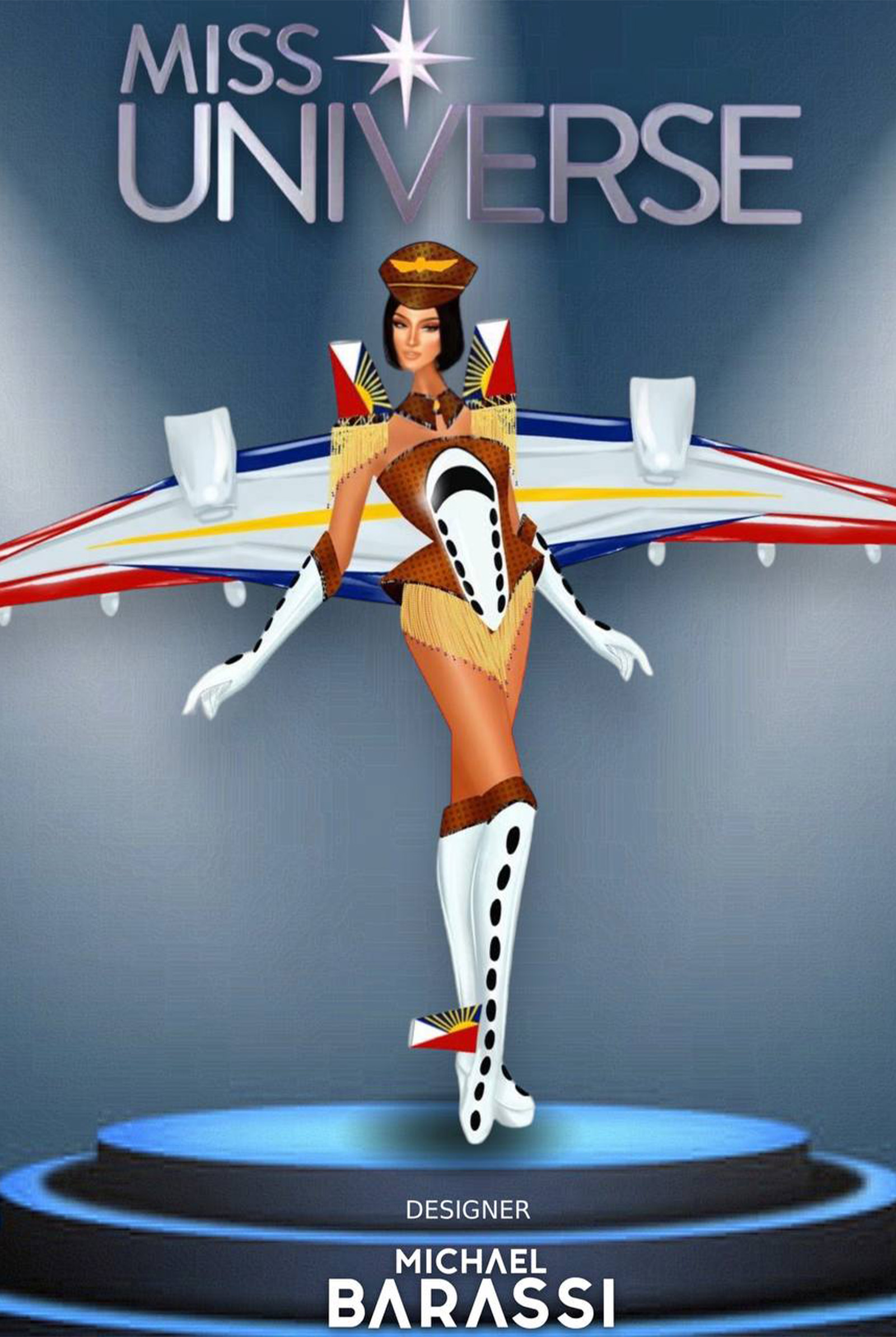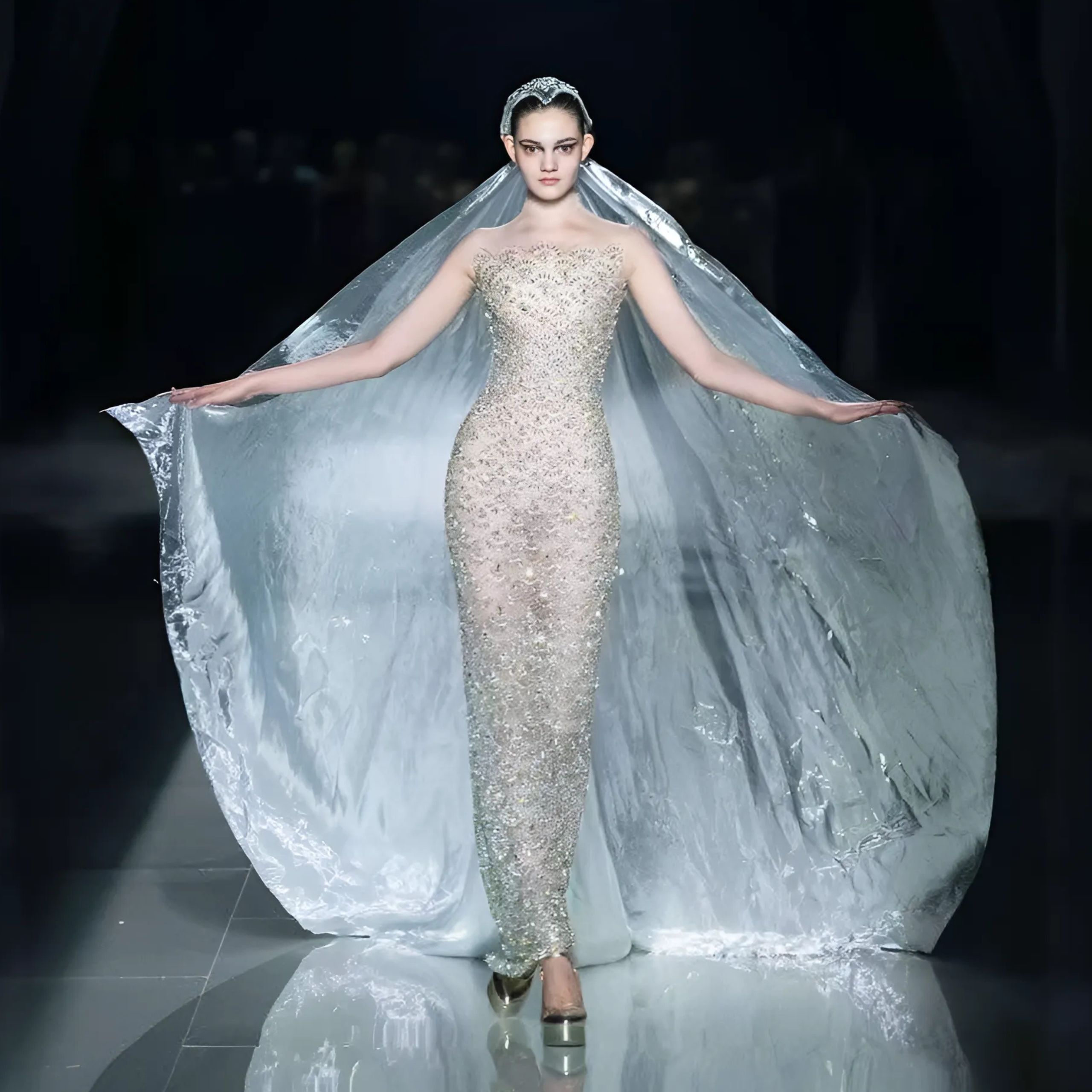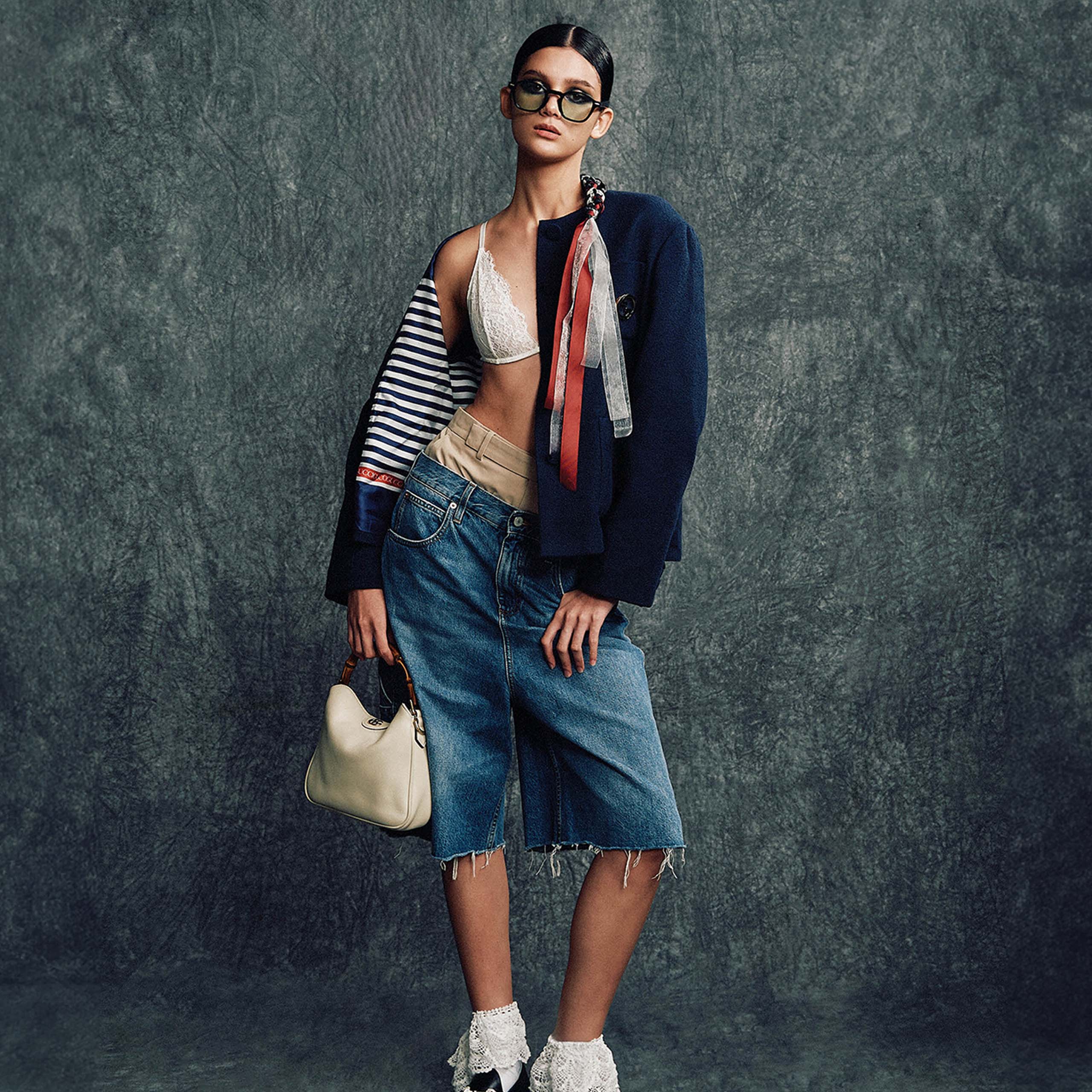In an exclusive interview with MEGA, designer Michael Barassi takes us on a flight with Michelle Dee’s Miss Universe National Costume
For Miss Universe, the national costume serves as a dynamic representation of a country’s culture on the global stage. It goes beyond being just clothing, acting as a living embodiment of a nation’s identity—reflecting its lifestyle, thoughts, knowledge, and the various professions that shape its essence. Always, it’s a costume that explores the skies of design. National Costume designer Michael Barassi shows off his winged wonders and goes up, up, and away to Michelle’s dreams.
RELATED: MEGA’s Top Evening Gowns For Miss Universe 2023

A concept born to fly
Barassi reveals the essence of a creation that elevates the concept of “AIRPLANE” beyond its mechanical roots. Inspired by Michelle’s role as a military reservist in the Philippine Air Force, the costume symbolizes more than just a mode of transportation. It becomes a poignant metaphor for the Filipino diaspora—bridging dreams and home, embodying the resilience that defines the nation.
Behind the scenes, a collaboration in the creative airspace unfolds between the designer and a queen. The sketch takes flight, with each stroke meticulously crafted to encapsulate a concept. “We are a country endowed with rich and majestic scenic spots,” the designer shares. “It always entices people all over the world to fly to the Philippines and feel the warmth of Filipino hospitality.”

Yet, propelled by determination, Barassi pilots a story that goes beyond the physicality of the costume, navigating the creative skies with finesse and familial bonds. In contemplation, he reveals, “As a designer who has OFW relatives and friends, the airplane concept hits me different.” An airplane isn’t just a mechanical conveyance, but a poignant vessel that propels individuals toward their aspirations and cradles the very idea of being Filipino: “Home is where the heart of a Filipino belongs.”
Crafting the skyline
The challenges faced during creation become the crucible for innovation. “I experienced many of my ‘firsts’ in creating the national costume.” Barassi, in his pursuit of excellence, incorporates novel techniques—from fiberglass experimentation to intricate rattan-woven patterns. The costume becomes a sculpture, adorned with Cordilleran loom fabrics, hydraulic mechanisms, and the luminance of LED lights—craftsmanship engineered the richness of Filipino culture.

Three facets were faced in this challenge of crafting airplane couture: distance, weather, and manpower. Humor integrates itself, sparked by a memorable hiccup during the chaotic and exhilarating day of Michelle’s journey to El Salvador. The blunder involves the infamous box, a victim of forgetful measurements. Stripped from its confines, the costume embarks on an independent voyage, resiliently surviving to impeccably fit Michelle on her designated fitting day. The production journey of the costume, embarking from Nueva Vizcaya, soars through the challenges of distance and weather. This anecdote not only injects a touch of humanity, but also echoes the proverbial wisdom that “it takes a barangay.” In this case, a barangay armed with more accurately measured boxes.
Beyond the horizon

Michelle Dee said, “We are home to beautiful natural resources, from the beaches to the mountains, but the best natural resource that we have is us—Filipinos.” In the discourse of barangays, it reverberates with her assertion that the Philippines’ most precious resource is its people. The intricacies embedded in the painting on the costume’s back unfurl a visual of relationships. Her brothers, navigating the spectrum, ride the jeepney. The woven fabrics, cradled by her parents, Derek Dee and Melanie Marquez, exceed their material form, creating life into family—a fundamental stratum of Filipino identity. Ultimately, the national costume becomes a resolute proclamation of pride, an emblem of collective Filipino heritage.
RELATED: Michelle Dee Honors Her Family’s Legacy For Miss Universe
In certain regions, the national costume is more than a piece of clothing; it becomes an unofficial uniform, weaving together the fabric of a nation and symbolizing the collective spirit. As these costumes take flight, they carry not only the physical attire, but also the aspirations, pride, and shared stories of a nation. When we fly, the spirit of our nation soars with us.
Photos: MICHAEL BARASSI










